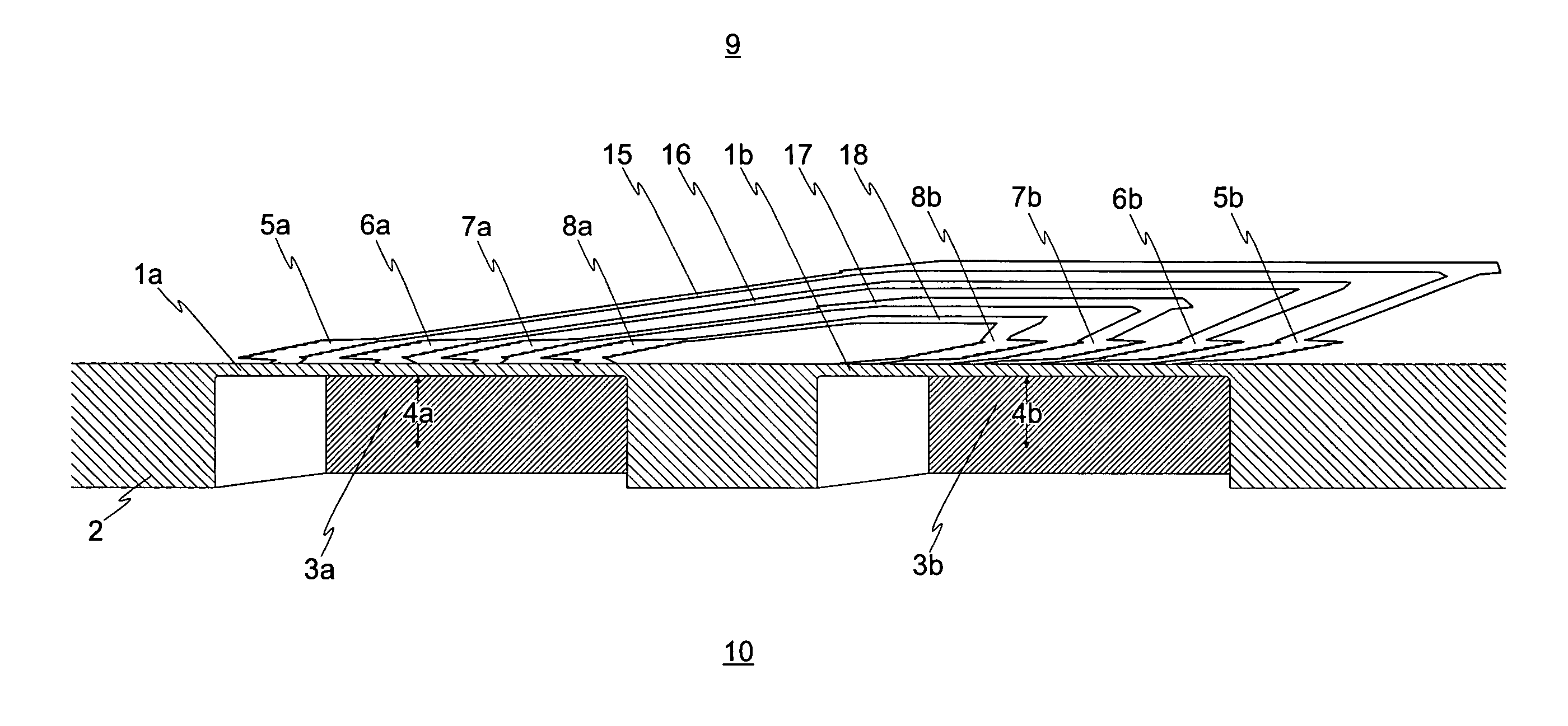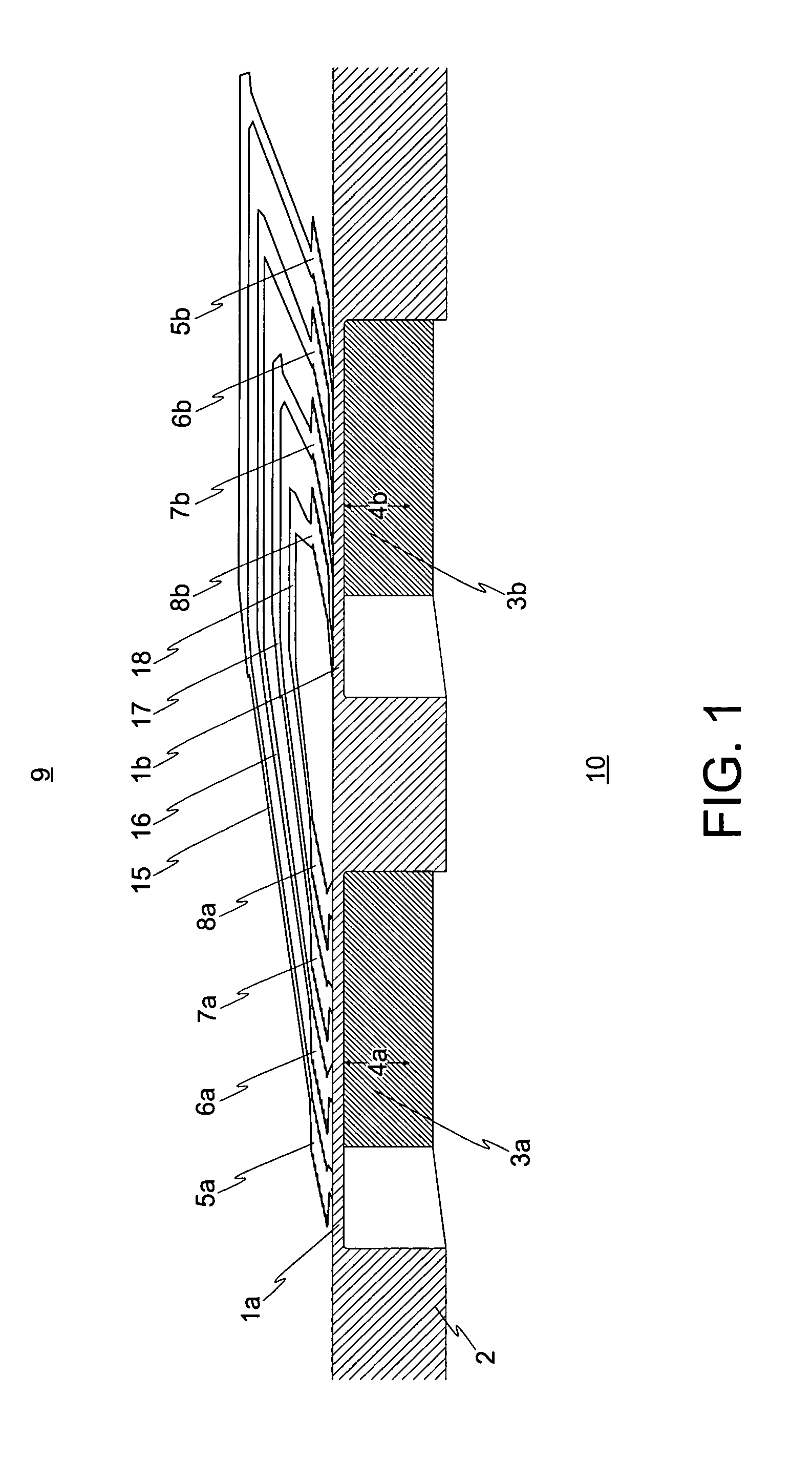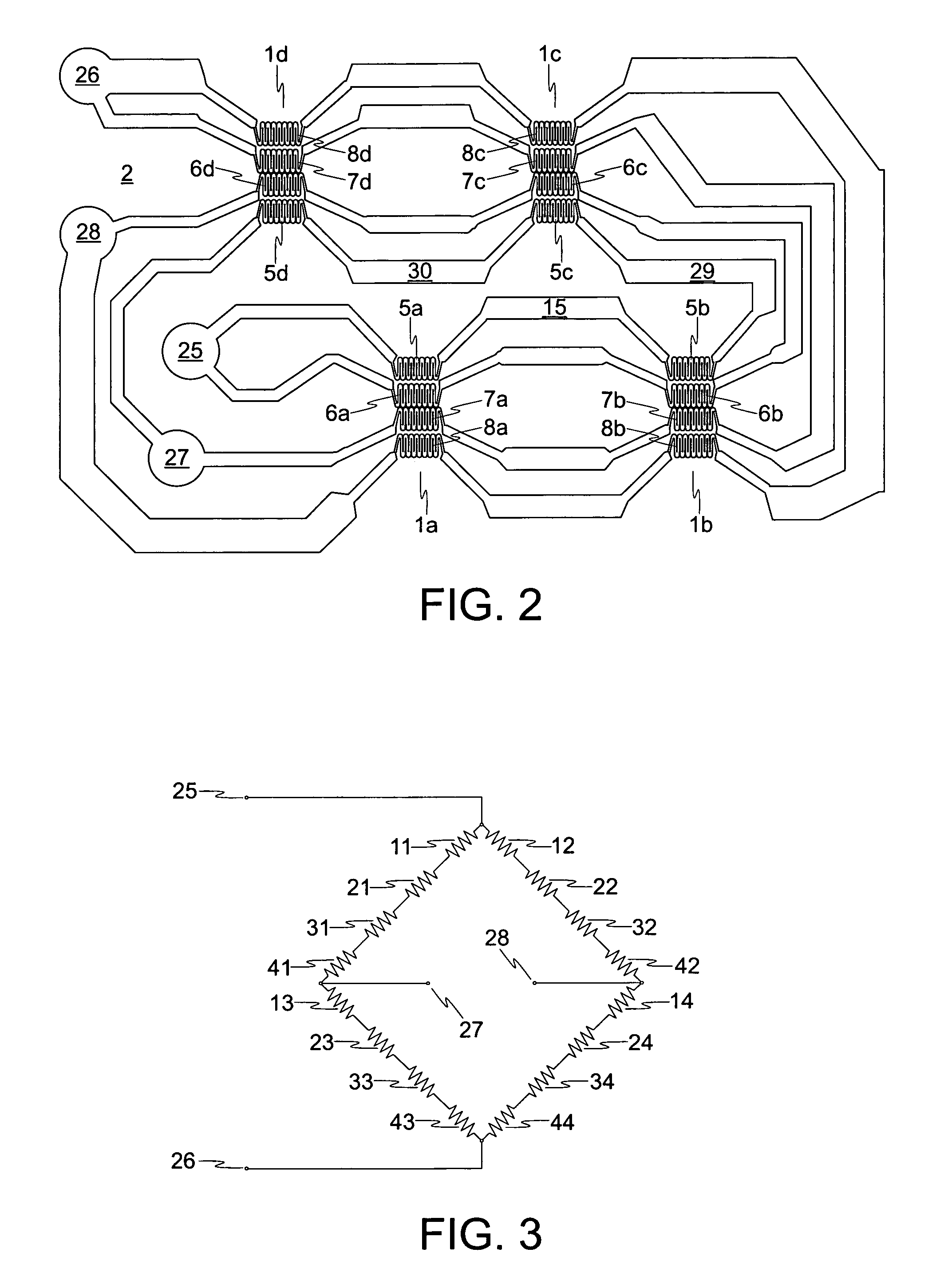Multi-diaphragm pressure sensors
a pressure sensor and diaphragm technology, applied in the direction of fluid pressure measurement using elastically deformable gauges, instruments, mechanical elements, etc., can solve the problems of reducing the ability of sensors to return to normal operation, reducing the ability of pressure sensors reducing the difficulty of burst pressure ratio, etc., to achieve the effect of improving the ability to resist permanent deformation or fracture, reducing the risk of rupture, and improving the resistance to pressur
- Summary
- Abstract
- Description
- Claims
- Application Information
AI Technical Summary
Benefits of technology
Problems solved by technology
Method used
Image
Examples
Embodiment Construction
)
[0034]The present invention relates to pressure sensors that use multiple transducer elements to detect pressure-induced deflections of multiple flexible diaphragms, said transducer elements being wired in such a way that the signals are additive. The present invention further relates to pressure sensors of improved sensitivity. The present invention further relates to pressure sensors capable of sensing small pressure changes at high overall pressures. The present invention furthermore relates to multiple diaphragm pressure sensors wherein the individual diaphragms can be made smaller or stiffer to yield a higher burst pressure while retaining high sensitivity.
[0035]A number of embodiments of the present invention include a pressure sensor comprising a substrate with at least two openings and at least two flexible diaphragms held across the openings of the substrate. The substrate can be made from any material known to those skilled in the art. If the openings of the substrate are...
PUM
| Property | Measurement | Unit |
|---|---|---|
| pressure | aaaaa | aaaaa |
| pressures | aaaaa | aaaaa |
| pressures | aaaaa | aaaaa |
Abstract
Description
Claims
Application Information
 Login to View More
Login to View More - R&D
- Intellectual Property
- Life Sciences
- Materials
- Tech Scout
- Unparalleled Data Quality
- Higher Quality Content
- 60% Fewer Hallucinations
Browse by: Latest US Patents, China's latest patents, Technical Efficacy Thesaurus, Application Domain, Technology Topic, Popular Technical Reports.
© 2025 PatSnap. All rights reserved.Legal|Privacy policy|Modern Slavery Act Transparency Statement|Sitemap|About US| Contact US: help@patsnap.com



